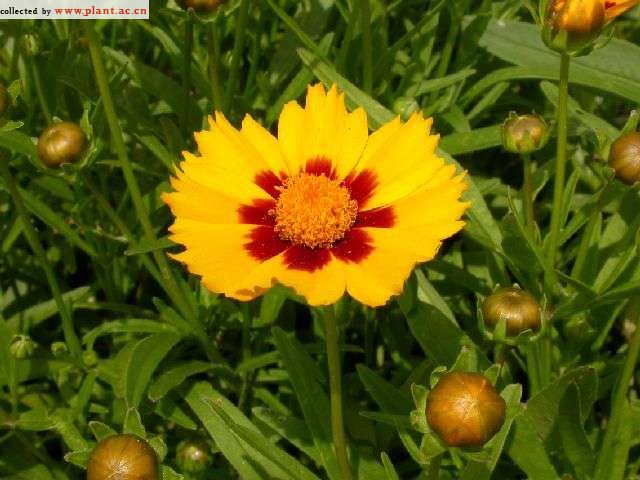Coreopsis grandiflora DominoCoreopsis
Family:Asteraceae
属:金鸡菊属
common name:Coreopsis
introduce:Plant Type: Herbaceous perennial
Family: Asteraceae
Missouri Native: No
Native Range: None
Height: 1 to 1.5 feet
Spread: 1 to 1.5 feet
Bloom Time: June - August
Bloom Color: Yellow
Sun: Full sun (only)
Water: Dry to medium moisture
Maintenance: Low
General Culture:
Easily grown in dry to medium wet, well-drained soil in full sun. Thrives in poor, sandy or rocky soils with good drainage. Tolerant of heat, humidity and drought. Prompt deadheading of spent flower stalks encourages additional bloom and prevents any unwanted self-seeding. Freely self-seeds. Although many coreopsis cultivars should be propagated vegetatively, 慏omino?may be purchased as seed and generally comes true from seed. Plants are somewhat short-lived and self-seeding helps perpetuate a good planting in the garden. Plants may be cut back hard in summer if foliage sprawls or becomes unkempt. When grown in borders or other formal garden areas, division may be needed every 2-3 years to maintain robustness.
Noteworthy Characteristics:
慏omino?is a compact coreopsis cultivar which features solitary, yellow, daisy-like, single flowers (to 2?diameter) with bright yellow rays and dark maroon markings at the petal bases forming a circle around the darker yellow center disk. Flowers appear singly atop slender, erect stems rising to 18?tall. Flowers typically bloom from late spring to late summer and sometimes into fall, though bloom period can be much shorter if spent flowers are not regularly deadheaded. Spatulate to lanceolate leaves. Lower basal leaves are mostly entire, while smaller stem leaves may be pinnately lobed. Plants in the genus Coreopsis are sometimes commonly called tickseed in reference to the resemblance of the seeds to ticks.
Problems:
No serious insect or disease problems. Compact plants are less likely to sprawl than taller varieties of coreopsis. Crown rot may occur if grown in moist, poorly drained soils.
Uses:
Borders. Also effective in naturalized areas, meadows, prairies or cottage gardens. Good plant for areas with poor, dry soils.
